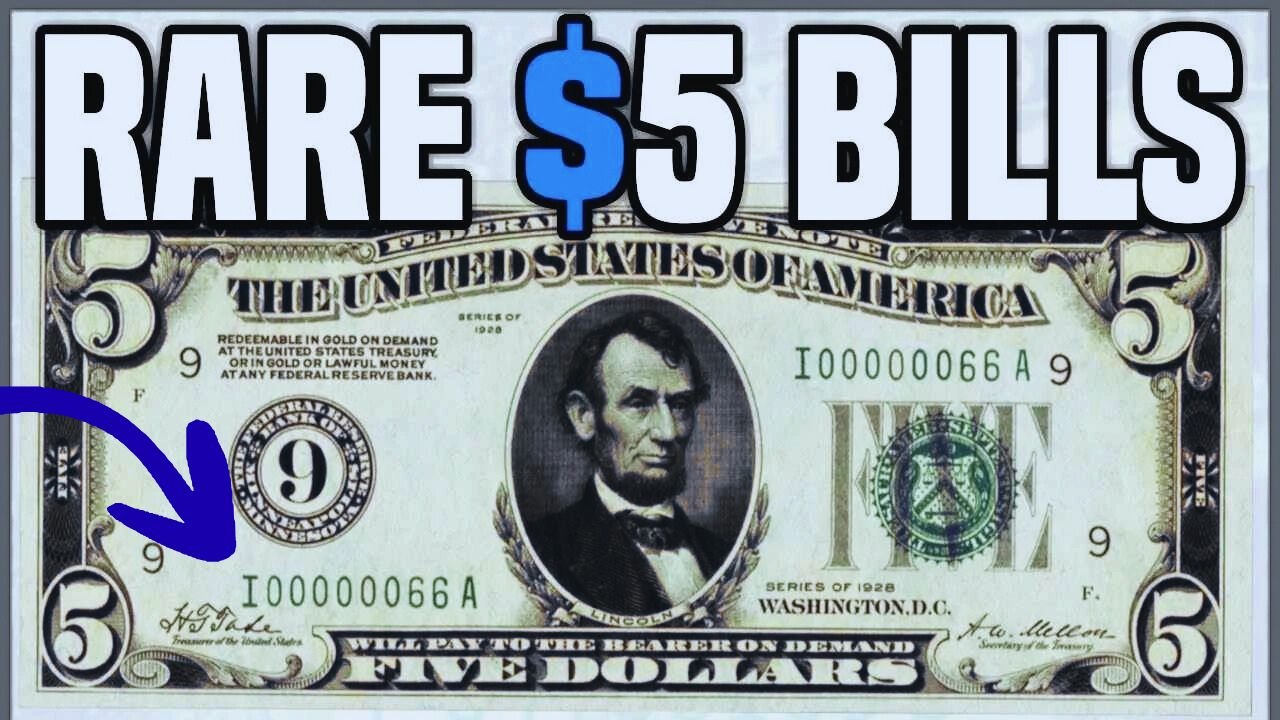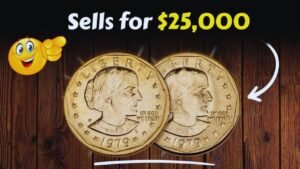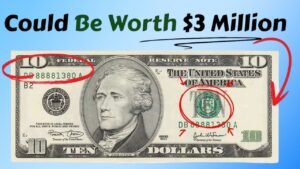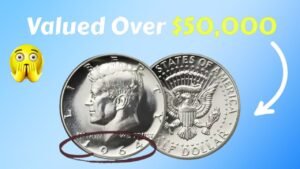Could a $5 bill in your wallet be a hidden treasure? A rare printing error on some 1995 $5 bills, featuring an upside-down Treasury seal, has collectors buzzing.
These bills could be worth hundreds or even thousands of dollars! With millions of $5 notes still circulating, you might be holding a valuable gem. Let’s dive into what makes this bill special, how to spot the error, and what to do if you find one.
What Is the 1995 $5 Bill Error?
A Rare Printing Mistake
The 1995 $5 bill features Abraham Lincoln on the front and the Lincoln Memorial on the back. A small batch of these bills was printed with a major error:
the green Treasury seal, normally upright next to Lincoln’s portrait, is flipped 180 degrees. This mistake slipped past the U.S. Bureau of Engraving and Printing’s strict quality controls.
Why It’s So Valuable
Only a few of these error bills made it into circulation, making them incredibly rare. Collectors prize these notes as unique pieces of history, with some selling for $500 to over $20,000 at auctions, depending on condition and rarity.
How to Identify the Upside-Down Seal Error
Step-by-Step Guide to Spotting the Error
You don’t need fancy tools to check for this valuable mistake. Follow these steps:
- Check the Series Year: Look for “Series 1995” near the bottom right of Lincoln’s portrait.
- Examine the Treasury Seal: The green seal on the right should be upside down, with the scales and key inverted.
- Compare with a Normal Bill: Line up your bill next to another $5 note to spot the difference.
- Inspect the Condition: Crisp, uncirculated bills are worth more.
- Verify Authenticity: Check for security features like the watermark and security thread.
Table: Normal vs. Error 1995 $5 Bill
| Feature | Normal Bill | Error Bill |
|---|---|---|
| Treasury Seal | Upright, aligns with portrait | Flipped 180 degrees |
| Series Year | 1995 | 1995 |
| Security Features | Watermark, security thread present | Same, but check for authenticity |
| Condition Impact | Worn bills less valuable | Pristine bills fetch higher prices |
| Serial Numbers | Standard alignment | May be misaligned or unique |
Tips to Avoid Confusion
- Don’t Mistake Wear for Error: A bent or damaged bill might look off but isn’t the error.
- Check for Counterfeits: Use a UV light to confirm the security thread glows blue.
- Look for Special Serial Numbers: Repeating digits or palindromes can increase value.
Why Collectors Are Obsessed with Error Bills
A Glimpse into Printing History
Currency errors like the upside-down seal are rare because of the Bureau’s tight quality checks. These mistakes represent a moment when human or mechanical error slipped through, making them fascinating to numismatists. Each bill tells a story of imperfection in a highly controlled process.
The Thrill of the Hunt
Collectors love the challenge of finding these scarce notes. Social media and auction sites like eBay have boosted interest, with stories of people finding error bills in everyday change. A high-grade 1995 $5 error bill sold for $2,750 at a Heritage Auctions event, showing the market’s excitement.
What to Do If You Find a Rare 1995 $5 Bill
Protect Your Treasure
If you suspect you have an error bill, handle it carefully:
- Store Safely: Place it in an acid-free currency sleeve to preserve condition.
- Avoid Cleaning: Cleaning can reduce its value significantly.
- Get It Authenticated: Use grading services like PMG or PCGS for verification.
- Explore Selling Options: Contact coin shops, auction houses, or online marketplaces.
Real-Life Success Stories
In 2023, a woman in Georgia found a 1995 $5 error bill in a cash register and sold it for $1,800. Another collector in New York discovered one in an inherited collection, fetching $5,000 at auction. These finds show that treasures can hide in plain sight!
Where to Look for These Rare Bills
Everyday Places to Check
You might find a 1995 error bill in:
- Pocket Change: Examine $5 bills from cash transactions.
- Bank Withdrawals: Request $5 bill stacks from your bank.
- Old Wallets or Drawers: Check forgotten cash stashes.
- Estate Sales: Look for bills in inherited collections or at flea markets.
Frequently Asked Questions
1. What is the 1995 $5 bill error?
It’s a rare printing mistake where the green Treasury seal on the right side of the bill is flipped upside down, making it highly valuable to collectors.
2. How much is a 1995 $5 error bill worth?
Depending on condition, it can sell for $500 to $20,000 or more. Pristine bills with unique serial numbers fetch the highest prices.
3. How do I know if my $5 bill is the error version?
Check for “Series 1995” and an upside-down Treasury seal. Compare it to a normal $5 bill and look for inverted scales and key designs.
4. Can I still find these bills in circulation?
Yes, it’s possible! Since $5 bills are common, some error notes may still be in wallets, cash registers, or old collections.
5. What should I do if I find an error bill?
Don’t spend it! Store it in a protective sleeve, get it authenticated by PMG or PCGS, and consider selling through auctions or dealers.
Conclusion
The 1995 $5 bill with an upside-down Treasury seal is a reminder that everyday money can hold extraordinary value. With a sharp eye, you could uncover a collector’s dream worth thousands. Start checking your $5 bills today—
look at the year, inspect the seal, and get suspicious notes appraised. Whether in your wallet or an old drawer, a rare find could be waiting. Don’t let a fortune slip through your fingers—happy hunting!




